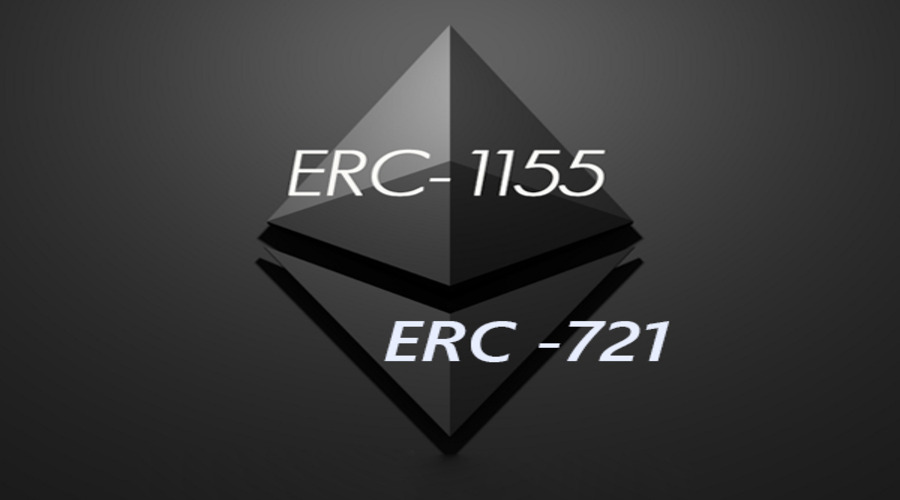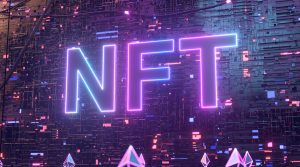In the world of digital assets, Non-Fungible Tokens (NFTs) have gained significant popularity in recent years. These unique tokens have revolutionized the way we perceive ownership and authenticity in the digital realm. However, not all NFTs are created equal. Different standards exist, each with its own set of features and capabilities. This article aims to provide a comparative analysis of two popular NFT standards, ERC-721 and ERC-1155, along with an exploration of other noteworthy standards in the NFT space.
What are NFTs?
NFTs, or Non-Fungible Tokens, are unique digital assets that can represent ownership or proof of authenticity for various types of digital and physical items. Unlike cryptocurrencies such as Bitcoin or Ethereum, which are fungible and interchangeable, NFTs are one-of-a-kind and indivisible. They leverage blockchain technology to ensure verifiable ownership and immutable records. NFTs, or Non-Fungible Tokens, are unique digital assets that represent ownership or proof of authenticity for various types of digital and physical items. Unlike cryptocurrencies like Bitcoin or Ethereum, which are fungible and interchangeable, NFTs are one-of-a-kind and indivisible. They leverage blockchain technology to ensure verifiable ownership and immutable records. NFTs have gained significant popularity in recent years, particularly in the domains of digital art, collectibles, gaming, and virtual real estate. Each NFT holds a distinct value and can be bought, sold, and traded on various online marketplaces, providing creators and collectors with new opportunities in the digital world.
The ERC-721 Standard
The ERC-721 standard, also known as the Ethereum Request for Comments 721, is one of the earliest and most widely adopted NFT standards. Developed on the Ethereum blockchain, ERC-721 enables the creation and ownership of unique digital assets. Each ERC-721 token represents a distinct item or collectible, making it highly suitable for applications like digital art, virtual real estate, and rare collectibles.
The ERC-721 standard, also known as the Ethereum Request for Comments 721, is a widely adopted NFT standard developed on the Ethereum blockchain. It enables the creation and ownership of unique digital assets. Each ERC-721 token represents a distinct item or collectible, making it highly suitable for applications like digital art, virtual real estate, and rare collectibles. With ERC-721, creators can tokenize their creations, ensuring provenance, authenticity, and ownership rights. The standard has paved the way for the explosion of NFT marketplaces and platforms, allowing artists and collectors to participate in the growing ecosystem of digital ownership.
The ERC-1155 Standard
Introduced later, the ERC-1155 standard builds upon the concepts of ERC-721 and introduces a more flexible approach to NFTs. Developed by Enjin, ERC-1155 allows for the creation of both fungible and non-fungible tokens within a single smart contract. This versatility enables developers to create hybrid tokens, where multiple items can be bundled together and traded as a single NFT. The ERC-1155 standard has found popularity in the gaming industry, where it enables efficient management of in-game assets. The ERC-1155 standard is a versatile NFT standard that builds upon the concepts of ERC-721. Developed by Enjin, it allows for the creation of both fungible and non-fungible tokens within a single smart contract. This flexibility enables developers to create hybrid tokens where multiple items can be bundled together and traded as a single NFT. The ERC-1155 standard has found particular popularity in the gaming industry, where it enables efficient management of in-game assets. By leveraging ERC-1155, developers can create dynamic and interactive experiences where players can own, trade, and interact with various virtual items, enhancing the gameplay and user engagement.
Other Noteworthy NFT Standards
While ERC-721 and ERC-1155 dominate the NFT landscape, there are other noteworthy standards worth considering. Some of these include:
ERC-20
Although primarily used for fungible tokens, ERC-20 has also been adapted for certain NFT use cases. Its wide adoption and compatibility with various wallets and exchanges make it an attractive option for token creators looking for liquidity and interoperability.
TRC-721 and TRC-1155
TRC-721 and TRC-1155 are NFT standards developed on the TRON blockchain. They share similarities with their Ethereum counterparts, ERC-721 and ERC-1155, respectively. TRON’s growing ecosystem and low transaction fees make these standards appealing to creators and collectors within the TRON community.
Binance Smart Chain Standards
The Binance Smart Chain (BSC) has also introduced its own set of NFT standards, including BEP-721 and BEP-1155. These standards provide alternatives for creators and collectors seeking to leverage the BSC network’s scalability and lower transaction costs.
Comparing ERC-721 and ERC-1155
While both ERC-721 and ERC-1155 serve as NFT standards, they differ in several key aspects. Here’s a comparison of the two:
- Token Structure: ERC-721 tokens are indivisible and represent unique assets, while ERC-1155 tokens can be both fungible and non-fungible within a single contract.
- Gas Efficiency: ERC-1155 tokens are more gas-efficient since multiple items can be managed within a single smart contract, reducing transaction costs.
- Flexibility: ERC-1155 tokens offer greater flexibility in terms of managing different types of assets and enabling batch transfers. ERC-721 tokens are more focused on representing individual unique assets.
- Use Cases: ERC-721 tokens excel in digital art, virtual collectibles, and rare assets, whereas ERC-1155 tokens find extensive use in gaming and managing in-game assets.
Use Cases and Applications
NFTs have found application in various domains. Some notable use cases include:
- Digital Art: NFTs provide artists with a unique way to tokenize and sell their digital creations, ensuring provenance and enabling monetization.
- Collectibles: NFTs have redefined the concept of collectibles, allowing enthusiasts to own and trade virtual assets like trading cards, virtual pets, and more.
- Gaming: NFTs enable ownership and trade of in-game assets, giving players true ownership and the ability to monetize their virtual achievements.
- Virtual Real Estate: NFTs can represent virtual properties and land within decentralized virtual worlds, creating new opportunities for investment and creativity.

Considerations for Choosing an NFT Standard
When choosing an NFT standard, several factors should be considered:
- Use Case: Determine the specific requirements and use case of your project to select a standard that aligns with your needs.
- Developer Support: Evaluate the developer community, documentation, and tools available for the chosen standard to ensure ease of implementation.
- Ecosystem and Adoption: Consider the network’s ecosystem, user base, and marketplaces supporting the standard to ensure visibility and liquidity.
- Gas Fees and Scalability: Assess the network’s transaction costs and scalability to ensure cost-effective and efficient token transfers.
The Future of NFT Standards
As the NFT ecosystem continues to evolve, new standards and improvements will emerge. The demand for interoperability, reduced transaction costs, and enhanced functionalities will drive the development of more advanced NFT standards. It is essential to keep an eye on the evolving landscape and stay updated with the latest advancements.
- Interoperability: NFT standards will focus on achieving interoperability between different blockchain networks. This will allow seamless transfer and interaction of NFTs across multiple platforms and ecosystems, enhancing liquidity and accessibility.
- Enhanced Functionality: Future NFT standards will introduce advanced features and capabilities, such as programmable attributes and dynamic properties. This will enable NFTs to evolve and adapt based on user interactions and external conditions, unlocking new possibilities for creativity and utility.
- Improved Scalability: As the demand for NFTs continues to grow, scalability will be a priority. NFT standards will seek to address scalability challenges by implementing solutions like layer 2 protocols, sidechains, and other scaling techniques to handle increased transaction volumes without compromising performance.
- Cross-Chain Compatibility: NFT standards will aim to bridge different blockchain networks, allowing for the seamless transfer of NFTs between different platforms and ecosystems. This will expand the reach and interoperability of NFTs, creating new opportunities for creators and collectors.
- Sustainable Solutions: With the increasing concern for the environmental impact of blockchain technology, future NFT standards will focus on implementing more eco-friendly solutions. This may involve utilizing energy-efficient consensus algorithms or exploring alternative blockchain architectures that minimize carbon footprint.
- Standardization Efforts: As the NFT landscape matures, there will be efforts to standardize NFT metadata, royalty structures, and licensing terms. This will provide clarity, transparency, and legal frameworks for creators and collectors, fostering trust and stability within the NFT ecosystem.
- Integration with Real-World Assets: Future NFT standards may facilitate the tokenization of real-world assets, including physical art, real estate, and intellectual property. This will open up new avenues for fractional ownership, investment opportunities, and increased liquidity for traditionally illiquid assets.
In summary, the future of NFT standards is characterized by interoperability, enhanced functionality, improved scalability, cross-chain compatibility, sustainable solutions, standardization efforts, and integration with real-world assets. These advancements will shape the NFT landscape, expanding its reach, utility, and impact across various industries.
Conclusion
NFTs have transformed the way we perceive digital ownership and have opened up new avenues for creators and collectors alike. ERC-721 and ERC-1155 are prominent NFT standards, each with its unique characteristics and applications. By understanding the strengths and considerations of these standards, creators can make informed decisions when choosing the right NFT standard for their projects.
FAQs (Frequently Asked Questions)
- What is the difference between ERC-721 and ERC-1155? ERC-721 tokens represent unique assets, while ERC-1155 tokens can be both fungible and non-fungible within a single contract.
- What are some popular use cases for NFTs? NFTs are popularly used in digital art, collectibles, gaming, and virtual real estate.
- Are there any alternatives to ERC-721 and ERC-1155? Yes, there are alternatives such as ERC-20, TRC-721, TRC-1155, and Binance Smart Chain standards.
- How do I choose the right NFT standard for my project? Consider your project’s specific requirements, developer support, ecosystem and adoption, and gas fees and scalability when choosing an NFT standard.
- What does the future hold for NFT standards? The future of NFT standards will involve advancements in interoperability, reduced transaction costs, and improved functionalities to meet growing demands.
I’m known as one of the best Crypto Authors in the market. My work has been featured in numerous publications, including The Wall Street Journal, Forbes, and Barron’s. I’m a regular contributor to CoinDesk and have been a guest on CNBC, Fox Business, and Bloomberg TV.



